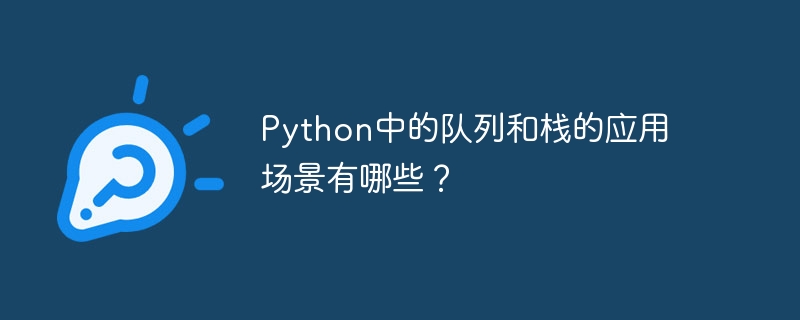Home >Backend Development >Python Tutorial >What are the application scenarios of queues and stacks in Python?
What are the application scenarios of queues and stacks in Python?
- PHPzOriginal
- 2023-10-20 16:15:521510browse

What are the application scenarios of queues and stacks in Python?
Queues and stacks are commonly used data structures in computer science, and they can effectively solve many practical problems. In Python, we can use the built-in Queue and collections modules to implement queues and stacks. Next, this article will introduce the definitions, characteristics and specific scenarios of queues and stacks in practical applications, and give corresponding code examples.
- Queue
Queue is a first-in-first-out (FIFO) data structure, similar to how we usually line up to buy tickets. In Python, we can use the Queue class provided by the Queue module to implement a queue.
Application scenarios:
- Breadth-first search (BFS): In graph theory and tree algorithms, breadth-first search often uses queues to implement the access sequence of nodes. The first-in-first-out nature of the queue ensures that nodes are traversed layer by layer.
Code example:
from queue import Queue
q = Queue()
q.put("A")
q.put("B")
q.put("C")
while not q.empty():
item = q.get()
print(item)- Stack
Stack is a last-in-first-out (LIFO) data structure, similar to In the way we stack books. In Python, we can use the built-in list (List) to implement the stack function.
Application scenario:
- Depth-first search (DFS): In graph theory and tree algorithms, depth-first search uses a stack to implement the access sequence of nodes. The last-in-first-out nature of the stack ensures that exploration is done on the deepest path.
Code example:
stack = []
stack.append("A")
stack.append("B")
stack.append("C")
while stack:
item = stack.pop()
print(item)To sum up, queues and stacks are common data structures and have a wide range of application scenarios in Python. Queues can be used in scenarios such as breadth-first search that require sequential access to elements, while stacks are suitable for scenarios such as depth-first search that require reverse traversal of elements. By fully understanding the characteristics of queues and stacks, we can solve various practical problems more easily.
The above is the detailed content of What are the application scenarios of queues and stacks in Python?. For more information, please follow other related articles on the PHP Chinese website!

